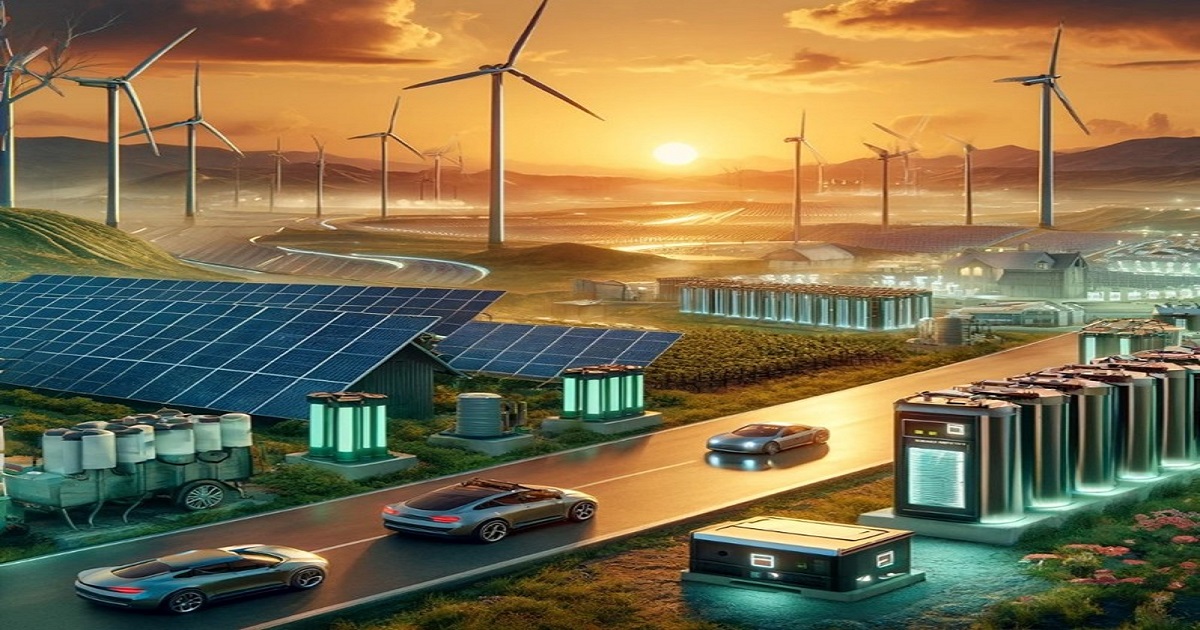Control and Optimization of Electrical Power and Energy Systems to Integrate More Renewable and Sustainable Energy Resources
A special issue of Energies (ISSN 1996-1073). This special issue belongs to the section "F: Electrical Engineering".
Deadline for manuscript submissions: closed (5 September 2025) | Viewed by 6818

Special Issue Editors
Interests: power system operation optimization; network expansion planning; transmission network topologies; optimal integration of distributed energy resources
Interests: microgrid systems; distributed control; optimal energy management
Special Issue Information
Dear Colleagues,
Modern electrical power and energy systems are constantly evolving and becoming more complex and interesting every day. The global move towards decarbonization is encouraging growth in the sustainable energy sector. The making of great advances towards more sustainable, renewable, and distributed power generation comes with many new opportunities, as well as new challenges. Furthermore, many new technologies are now commercially available, such as programmable smart loads, electric vehicles, smart meters, and smart inverters. Energy storage systems, such as battery energy storage, compressed air storage, power storage bricks, and fuel cells, have come to the fore. All these new technologies are an interesting addition to modern power systems and provide new opportunities for flexible operation and demand management. To optimally involve all these new components and utilize renewable energy resources more effectively, the operation, control, and management methods employed must be updated. The control and optimization of modern electrical power and energy systems are modern challenges that require modern solutions.
This Special Issue aims to present and disseminate the most recent advances in the control and optimization of electrical power and energy systems to integrate more renewable and sustainable energy resources. The areas focused on include control, theory, and modelling, optimization methods, renewable energy integration, demand management, energy trading, behaviour prediction, integrated energy systems, and applications.
Topics of interests for this publication include, but are not limited to, the following:
- Advanced Control Strategies for Renewable Integration:
- Development of adaptive and robust control strategies for managing the variability and uncertainty of renewable energy sources;
- Integration of distributed energy resources (DERs) and renewable energy systems into existing grid infrastructures with minimal disruption.
- Optimization Techniques for Grid Operation and Planning:
- Application of stochastic, robust, and convex optimization techniques to enhance grid planning, reliability, and resilience with high penetrations of renewables;
- Optimization of energy storage systems placement and operation to maximize the benefits of renewable generation.
- Demand Response and Load Management:
- Innovative demand response strategies that leverage renewable generation patterns to meet grid demand effectively;
- Consumer-centric load management techniques that encourage the use of renewable energy through dynamic pricing and incentives.
- Energy Storage Integration and Management:
- Control and optimization of hybrid energy storage systems to mitigate the intermittency of renewable energy sources;
- Strategies for integrating energy storage into renewable energy systems for smoothing power output and enhancing grid stability.
- Microgrids and Off-grid Solutions:
- Control and optimization strategies for microgrids incorporating renewables to ensure reliable and efficient operation;
- Solutions for off-grid and rural electrification using renewable energy sources, focusing on sustainability and access to clean energy.
- Technological Innovations and Emerging Trends:
- Exploration of emerging technologies such as blockchain for the secure and efficient management of transactions in systems with high renewable integration;
- The role of artificial intelligence and machine learning in optimizing grid operation, renewable integration, and predictive maintenance.
- Energy models and their use in optimizing future pathways for energy networks;
- Integrated energy systems.
Additionally, please ensure that the summary aligns with the aims and scope of Energies: https://www.mdpi.com/journal/energies/about.
Dr. Muhammad Numan
Dr. Arshad Nawaz
Dr. Alireza Zakariazadeh
Guest Editors
Manuscript Submission Information
Manuscripts should be submitted online at www.mdpi.com by registering and logging in to this website. Once you are registered, click here to go to the submission form. Manuscripts can be submitted until the deadline. All submissions that pass pre-check are peer-reviewed. Accepted papers will be published continuously in the journal (as soon as accepted) and will be listed together on the special issue website. Research articles, review articles as well as short communications are invited. For planned papers, a title and short abstract (about 100 words) can be sent to the Editorial Office for announcement on this website.
Submitted manuscripts should not have been published previously, nor be under consideration for publication elsewhere (except conference proceedings papers). All manuscripts are thoroughly refereed through a single-blind peer-review process. A guide for authors and other relevant information for submission of manuscripts is available on the Instructions for Authors page. Energies is an international peer-reviewed open access semimonthly journal published by MDPI.
Please visit the Instructions for Authors page before submitting a manuscript. The Article Processing Charge (APC) for publication in this open access journal is 2600 CHF (Swiss Francs). Submitted papers should be well formatted and use good English. Authors may use MDPI's English editing service prior to publication or during author revisions.
Keywords
- electrical power systems
- integrated energy systems
- optimization and planning
- operation and control
- system management
- energy modelling
- energy systems
- energy storage
Benefits of Publishing in a Special Issue
- Ease of navigation: Grouping papers by topic helps scholars navigate broad scope journals more efficiently.
- Greater discoverability: Special Issues support the reach and impact of scientific research. Articles in Special Issues are more discoverable and cited more frequently.
- Expansion of research network: Special Issues facilitate connections among authors, fostering scientific collaborations.
- External promotion: Articles in Special Issues are often promoted through the journal's social media, increasing their visibility.
- Reprint: MDPI Books provides the opportunity to republish successful Special Issues in book format, both online and in print.
Further information on MDPI's Special Issue policies can be found here.







